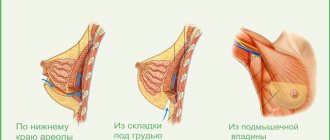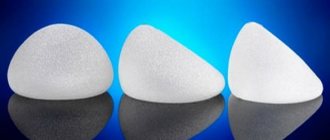Description of the disease
Achondroplasia
is a congenital disease of the musculoskeletal system of a generalized nature, accompanied by body disproportion and short stature (growth retardation - 30-40 centimeters).
If your child has been diagnosed with this, do not despair. Thanks to the rapid development of medicine and the emergence of innovative technologies, it is quite possible to correct pathology through surgical treatment and the use of special devices.
Surgeries to increase height for achondroplasia
It is best to start at 6-7 years old. In childhood, surgery is relatively easy and almost unaccompanied by complications, and the body quickly adapts to changes.
Features of treatment according to Vitaly Veklich’s method
In treating the consequences of achondroplasia, doctors at the Ladisten clinic use patented Veklich apparatuses, which are an improved version of the Ilizarov apparatus. Their action is based on the limb lengthening technique developed by Ilizarov and improved by Veklich. The design allows us to comply with the basic principle that the clinic staff is guided by - “do no harm.” Thanks to a minimally traumatic operation with stretching of the limbs using the device, it is possible to achieve the best possible result and prevent serious complications.
When using the Ilizarov apparatus, noticeable scars remained from surgical incisions and from a large number of wires, which also took a long time to heal and often became infected, which led to pain, muscle contracture and the development of osteomyelitis. Now these problems can be avoided.
How do legs lengthen and height increase?
Height increase surgery is a surgical intervention that is performed by lengthening two legs at the same time. If there is disproportion of the limbs, lengthening is also done for one leg.
Previously, this operation was performed using the Ilizarov apparatus. The Ilizarov technique was founded and proposed in 1951. The essence of the technique was to stretch soft tissues and bone, resulting in distraction (stretching). Under the influence of tissue tension, bone regenerate occurs. Over time, the renegade turns into ordinary bone tissue.
In addition to its advantages, the Ilizarov apparatus also has serious disadvantages: for example, due to its non-functional structure, it leaves large scars from the needles after the end of treatment. In addition to the cosmetic defect, which was especially embarrassing for women and mothers of girls, doctors were concerned about the healing of wounds. Very often, an infection got into the holes where the needles were located, after which an infection occurred that could lead to muscle contractures or osteomyelitis.
Principles of treatment of achondroplasia using the Veklich method
- bloodlessness and efficiency during installation;
- no noticeable scars;
- light weight and hemispherical shape (as opposed to the classic triangular), which minimizes wearing discomfort;
- hypoallergenic - absence of allergic reactions;
- the ability to withstand a large body weight of patients;
- a minimum number of knitting needles that can injure soft tissues;
- quick removal;
- high efficiency of treatment.
The clinic’s doctors select a device for each patient individually, taking into account the diagnosis and age, body proportions and growth characteristics.
How is surgical treatment of hallux valgus performed?
Hallux valgus: A noticeable deviation of the big toe toward the outside of the foot and misalignment of other joints.
Asymmetry of the sesamoid bones. © joint-surgeon Surgical treatment of hallux valgus helps to straighten the curved position of the bony axis of the big toe. In addition, surgical treatment helps to normalize tendon-muscle tone. Otherwise, the thumb deviates more and more to the side. A very important point during the operation is careful treatment and minimal trauma to the muscles and tendons surrounding the first toe. Also, surgical treatment of hallux valgus deformity contributes to long-term improvement of finger pronation.
Surgical treatment of hallux valgus also involves monitoring the condition of the sesamoid bones. Os sesamoideum or sesamoid bone is located in the thickness of the tendons and is responsible for maintaining the required distance to the bone, preserving the original functions of the tendon apparatus. During the operation, the surgeon must monitor the position and condition of the sesamoid bones. When this component of the flexor apparatus of the foot takes part in pathological processes, the patient experiences severe pain, which significantly worsens the quality of his life.
The duration of the operation is about one hour. Typically, surgeons use minimally invasive surgical techniques that involve small incisions. This operating principle significantly reduces the risk of infection. After this surgery, patients may experience minimal scarring. In most cases, surgical treatment of hallux valgus is combined with the following techniques:
- Corrective osteotomy: This intervention is aimed at correcting the crooked position of the foot.
- Soft tissue correction (lateral release): Treatment of the joint capsule and straightening of hallux valgus.
- Surgical treatment of tendons: Correction of tendon length to avoid hallux valgus.
- During surgery for hallux valgus pathology, the surgeon may also perform a joint-preserving cheilectomy (removal of bone spurs). In case of severe arthrosis (hallux rigidus), arthrodesis is performed (immobilization of the first metatarsophalangeal joint). In this way, the patient is relieved of severe foot pain and quickly returns to previous activities. Fortunately, this procedure is performed quite rarely.
Stages of treatment for achondroplasia at the Ladisten Clinic
If you lengthen only the lower limbs, then the disproportion of the body increases. Therefore, simultaneously with the legs and thighs, the shoulder segment is also lengthened.
At the Ladisten Clinic, height increase with dwarfism
carried out in 6 stages in two times.
At the age of 4-6 years, the first 3 stages are carried out:
- at the first stage, the legs are lengthened by 6 centimeters;
- at the second stage, the thighs are lengthened by 7-8 centimeters;
- at the third stage, the shoulders are lengthened by 5 centimeters.
At 14 - 15 years old they begin the following 3 stages:
- at the fourth stage, the legs are lengthened by 6 centimeters;
- at the fifth stage, the hips are lengthened by 6-7 centimeters;
- at the sixth stage, the shoulders are lengthened by 5 centimeters.
The duration of each stage is 5-6 months. Between them they take a 2-3 month break.
Indications for surgery to increase height (lengthen legs)
Making the decision to undergo surgery to increase height is a serious step, so we insist on a preliminary consultation with a doctor. It is important that there are indications for the operation.
If you belong to the following categories, we are waiting for you for a consultation at the Ladisten Clinic:
Who should make an appointment?
- Those who want to improve proportions.
- Men and women who want to increase their height.
- Patients with congenital disproportion of the leg and thigh.
- A shortened limb due to injury or illness.
- Diagnosis of achondroplasia (dwarfism).
Removing the device
Before removing the device, a test is done. To do this, loosen the fixation of the correction device and advise the patient to walk for 2-3 hours. Then an x-ray is taken, based on the results of which the attending physician decides to remove the device. The procedure takes no more than 10-20 minutes, after which the patient can return home or stay in the clinic to undergo rehabilitation.
During rehabilitation, it is necessary to gradually increase the load on the legs and perform therapeutic exercises to strengthen the muscles.
How effective is surgical treatment of hallux valgus?
The effectiveness of the operation does not depend on the severity of the hallux valgus deformity. However, the severity of the hallux valgus disease determines the surgical procedure. Treatment of hallux valgus has certain features that are explained by the structure of the metatarsophalangeal joint of the big toe, which in turn differs from others by the presence of sesamoid bones and muscles responsible for its stabilization and the strength of the first ray of the foot. The use of stabilizing metal implants is typical for patients with pronounced valgus deformity. In such cases, patients should be prepared for long-term treatment and a longer recovery process. Sometimes these metal structures are removed after 6-12 months. And even with a very pronounced bunion, accompanied by arthrosis of the first metatarsophalangeal joint, the orthopedic specialists at the Gelenk Clinic in Freiburg are able to achieve a similar result.
Before each operation, experienced surgeons of the Gelnk Clinic conduct a conversation with the patient, during which they discuss all the possible advantages and complications of the surgical intervention. According to the results of international studies, almost 80% of patients feel very well after surgery. Another 10-15% of those operated on feel even better than before surgery. And only about 5% of patients did not feel any improvement. How effectively the surgical treatment of hallux valgus will be successful depends on the qualifications and experience of the operating surgeon.
Based on many years of experience and cooperation with exclusively experienced and knowledgeable specialists, we recommend regular home exercises to each patient. We believe that with special exercises, surgical treatment of hallux valgus will be more effective. A detailed description of gymnastic exercises is provided by the specialized center of the Gelenk Clinic for the treatment of foot diseases in Freiburg.
Preparation
Although preparation for the operation is simple, it still requires attention and time. You will need to take a biochemical blood and urine test, have an x-ray and ultrasound examination of the lower extremities, and also consult with a cardiologist, orthopedist, anesthesiologist and surgeon.
A week before surgery, it is advisable to stop smoking and drinking alcohol, as they inhibit bone tissue regeneration. You should also be prepared to not be able to eat or drink on the day of surgery.
What type of anesthesia does the patient receive for thumb surgery?
As a rule, surgical treatment of hallux valgus deformity is performed under general anesthesia. However, if the patient wishes, this operation can be performed under local anesthesia. To do this, the anesthesiologist injects an anesthetic into the spinal canal of the lumbar spine. During such an operation, the patient is fully conscious. What type of anesthesia is suitable for the patient is determined individually, during a conversation with the anesthesiologist. At the same time, our specialists take into account all available indicators, as well as the physical condition of the patient. The practicing anesthesiologists of the Gelenk Clinic in Freiburg are professionals in both of the above-mentioned methods.
Who is suitable for surgical treatment of hallux valgus?
In order to accurately assess the condition of the foot and determine the degree of hallux valgus, we will need recent x-rays, as well as an MRI. Based on these images, your doctor will be able to tell if surgery is right for you. Good blood circulation is the key to a quick recovery after metatarsal surgery. The foot is the most distant organ of movement from the heart. The soft tissue coverings on an overloaded foot are very thin, and the mechanical loads, on the contrary, are high. That is why all diseases that reduce already poor blood circulation negatively affect the healing process after surgery. The following pathologies prevent successful correction of hallux valgus or complicate this process:
- obliterating atherosclerosis of peripheral arteries
- diabetic foot
- the initial stage of polyneuropathy (a nervous disease often caused by diabetes)
- venous insufficiency
If the above diseases are present, before performing surgical treatment of hallux valgus, our specialists should consult with a phlebologist.
Polyarthritis and rheumatoid diseases do not prevent foot surgery. However, in this case, it is necessary to pay special attention to the surgical technique used to treat hallux valgus. The surgeon needs to be especially careful if the patient has already had hallux valgus surgery, since this fact only complicates repeated corrective treatment.
Poor circulation is always a contraindication: Obliterating atherosclerosis of the peripheral arteries or diabetic foot syndrome prevent or complicate the wound healing process after surgical treatment of hallux valgus. © Viewmedica
Possible complications
Since you are trying to independently eliminate your “shortcomings” that nature has endowed you with, you should be prepared for anything. Such interference may have its consequences. Typically, there is a risk that the following violations will occur:
- Bone tissue will lose its regenerative abilities, and healing will take a long time.
- An inflammatory process may break out around the device.
- There is a chance that difficulties will arise related to movement, which is caused by disorders in the knee joint and lower leg. However, this problem is mainly eliminated with the help of gymnastics.
In addition, we should not forget that such an important operation requires rehabilitation. But how successful it will be depends on the patient himself, how much willpower, determination and perseverance he has. After all, after such a procedure, light physical activity and walking are recommended. But in about three months it will be possible to increase the load and go in for sports.











